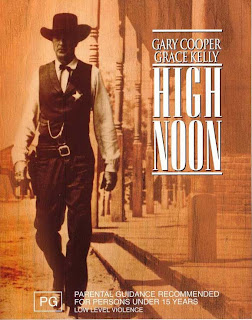The auteuer theorists praised Hitchcock for making art out of what could only otherwise be described as a B movie. But what if the director meant to create art out of a B movie and yet keep it a B movie? This scenario is the great thing about Peter Bogdanovich's Targets.
In Targets, Bobby Thompson (Tim O'Kelly) goes on a killing spree. Despite all the film's suggestions that guns are a cultural problem, we get little explanation to why guns are a problem (other than they can be used by a psychopathic Bobby). Likewise, there is little insight into what motivates Bobby to kill: maybe he kills because guns are available, maybe it is built into him because of military training, and maybe it is just being fed up with a life of modern complacency. At any rate, the minute justifications keep with the conventions of a B movie expertly.
Meanwhile, we watch an aging star named Byron Orlock (Boris Karloff) debate whether to do one last movie. If he does, he will have to promote his recent movie to stay in the game. Orlock decides he will do one last movie, so he has to promote his new film by making an appearance at a drive-in.
No viewer of Targets is particularly surprised to see Byron Orlock and Bobby Thompson at the drive-in at the end. Though it is a simple matter of being in the wrong place at the wrong time within the movie, Bogdanovich plays off of the B movie style by remaining transparent to the audience in his intentions.
At the drive-in, people watch (or are at least being shown) the new Byron Orlock movie. The movie itself is actually a B movie starring Boris Karloff and Jack Nicholson called The Terror. So we get a bargain; a B movie within a B movie, like a Freddy Krueger reference within the Scream films. We also get what we paid for: the final confrontation between Orlock and Bobby Thompson in classic low-budget fidelity.
What makes this a great film is that it does at least what a good B movie does: it indicates that is self-aware of what it is doing. How else would a director take pride in such films with low-budgets than by saying, "I am perfectly aware of what I am doing and am doing it because I want to?" Bogdanovich proves a worthwhile director here in Targets precisely because of the way he flaunts his ability to make art through honoring the conventions of the B movie.
IMDb rates this film 7.5 out of 10
Film 101 rates this film 4.5 stars out of 5
Other films directed by Bogdanovich include: The Last Picture Show, Paper Moon, and Mask
Film 101 rates this film 4.5 stars out of 5
Other films directed by Bogdanovich include: The Last Picture Show, Paper Moon, and Mask


